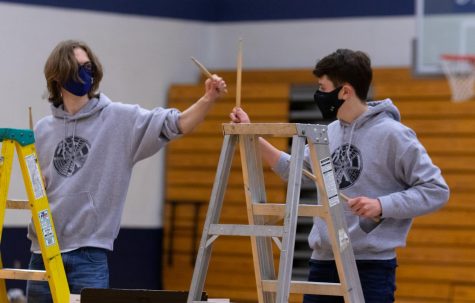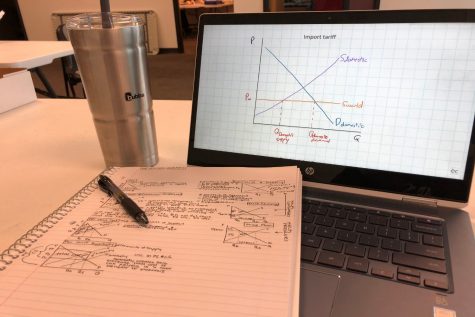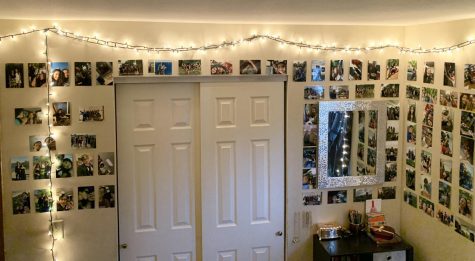Staying At Home and In Shape
How to stay active during COVID-19
Self-isolation is one of the most important factors in slowing the spread of COVID-19 and ensuring a speedy recovery back to our “normal” lives. However, there are negative consequences that can be assumed for many who are staying in their homes.
As the pandemic takes its course in the United States, non-essential businesses, gyms for example, have closed. Hand-in-hand with these closures is a decrease in people’s motivation or ability to exercise at home. The issue with this is that there will likely be an increase in weight and decrease in cardiovascular wellness. Even for those who aren’t athletes or don’t go to the gym everyday, there is a difference between walking the halls and participating in extracurricular activities versus laying in bed all day. Senior Jackson Michals puts emphasis on the importance of workouts in maintaining physical strength for his sport.
“As a year-round swimmer, I have to stay in-shape so that when the season resumes, I can still compete and perform well,” Michals said.
Another benefit of staying active, aside from the obvious physical manifestations, is the mental health component. As Malach Radigan, a strength coach, physical education teacher and health teacher at Francis Howell Central, outlines the mental benefits of physical activity are desirable during this time.
“When we exercise, we release chemicals such as endorphins and serotonin. Both of these chemicals improve our mood, make us feel better, reduce stress and anxiety, and release stress! It also pumps blood to our brain – allowing us to think more clearly,” Radigan informed.
It is important that these health benefits, though widely known and accepted, aren’t forgotten during this at-home stint of life. It is understandable, however, that people would lose their motivation to exercise during this period. To stay focused and active it is important to make a schedule, get creative with workouts, and not to push yourself too hard.
“Create a schedule so that you have self-accountability and structure,” Radigan explained.
Additionally, creative new workouts such as household tasks with a twist or online dance classes can keep exercise exciting if boredom is a reason for lack of motivation. It is important to keep in mind that doing something is significantly better than doing nothing. If a quick cardio routine is all that fits into your schedule on a certain day, then it is okay if that is all you do. The important thing is escaping a completely sedentary lifestyle.
As for the actual workouts to do during this time there are many available resources. The OrangeTheory Fitness YouTube account* posts daily, at-home workout videos. Another option is joining our schools PE classes and signing up for a 14-day free trial on the app PLT4M (this offer ends the 31st). Tabata Home workouts are another great resource. Going on walks around your neighborhood or walking a pet is another great option. For any specific questions or concerns, Coach Radigan’s email is always open malach.radigan@fhsdschools.org.
Like school, work and socialization, fitness has made a shift online. A simple google search turns up thousands of free, at-home, low-equipment basic exercise routines from trustworthy sources to keep up with physical and mental health. This is a great new system as it offers individuality in routines, creative ways to stay fit and an escape from laying in bed bored all day.
Your donation will support the student journalists of Francis Howell Central High School. Your contribution will allow us to purchase equipment and cover our annual website hosting costs. FHCToday.com and our subsequent publications are dedicated to the students by the students. We hope you consider donating to allow us to continue our mission of a connected and well-informed student body.







